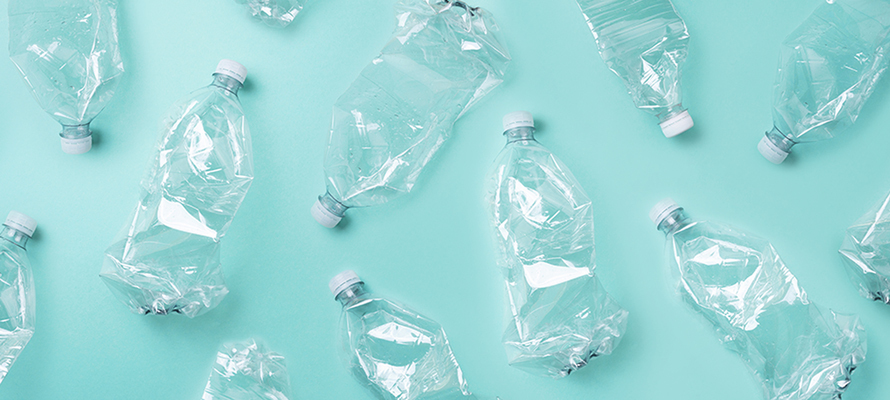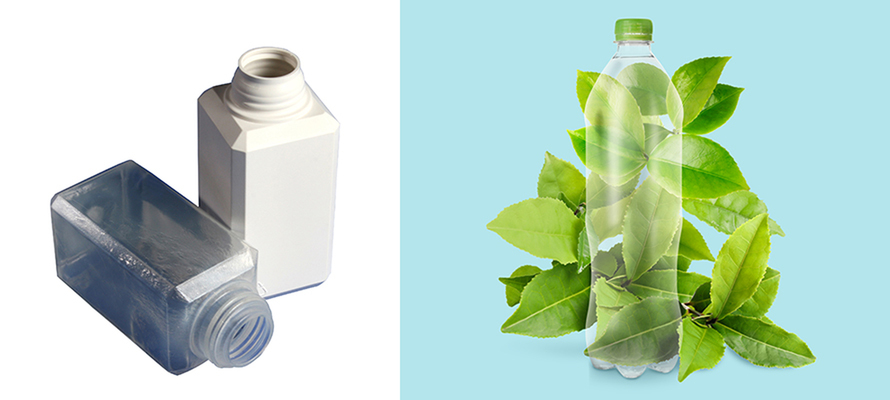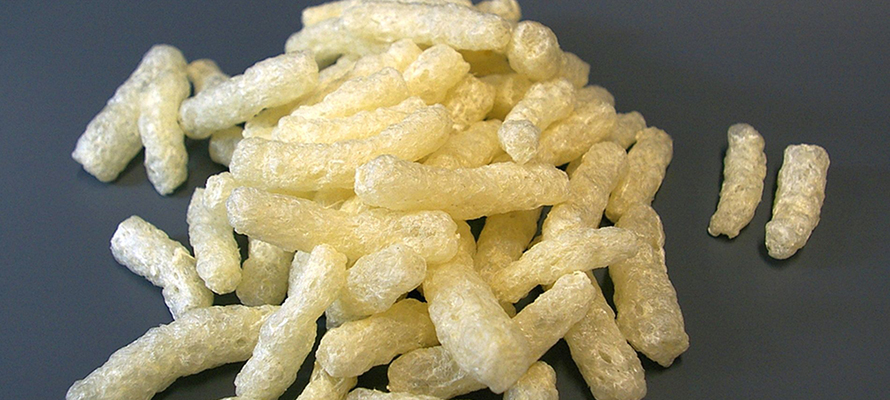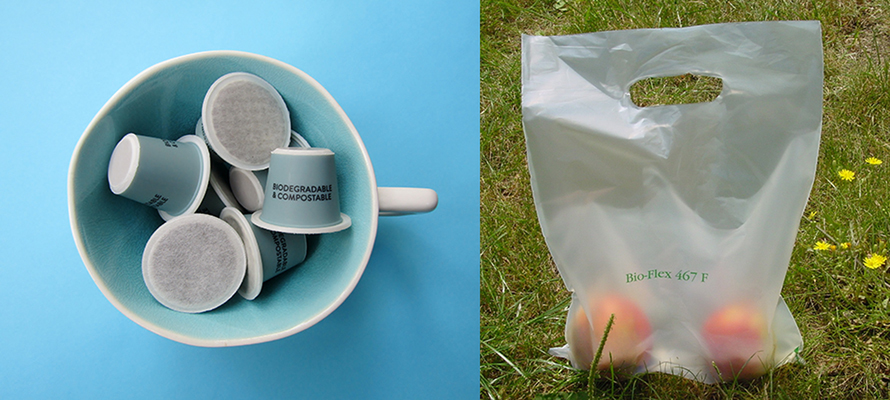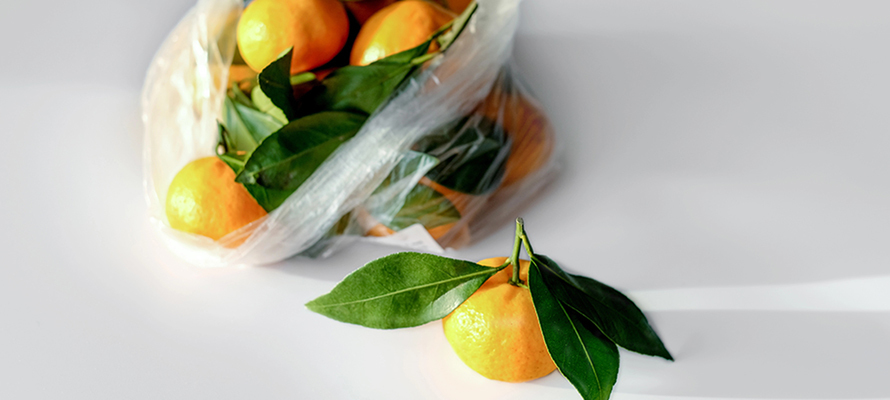Present and future of bioplastics
What they are, how they are classified, how they are printed and finished and what certifications the printing industry can rely on.
By Lorenzo Capitani | PRINTlovers 103
From the less-than-noble greenwashing to the striking demonstrations of the Last Generation, the world — at least the Western onem — seems to have finally decided to face the ecological transition and give itself rules and objectives for more sustainable and planet-friendly production.
It is a slow and complicated path with costs, requires breaking customs that sometimes appear illogical, and requires collective commitment at every level.
At least in theoretical terms, so far, every invention, every new technology or, in general, every reorganisation of production logic has been introduced to improve everyone's life, to save time and costs, to increase productivity and wealth: coal, oil, plastic have fulfilled these functions very well, but for decades we have not worried about the fact that they are limited resources, about their environmental cost, pollution produced and disposal of waste.
A new awareness
An ecological awareness seems to have set in, which at least forces us to reflect on our development model to try to change direction. If in the 1980s the spectre of the end of oil was looming, today the results of the ill-considered use of fossil fuels are before our eyes with climate change, microplastics in the sea, PFAS used to seal in groundwater, PM10 and particulate matter in the air, to name but a few of the problems we face. The phenomenon is far-reaching and directly proportional to the growth of the world's population and access to wealth, especially in emerging countries where the drive to close the gap leads to rushing ahead and ignoring the effects on the environment in the short and long term.
If in the past it seemed an issue to be dealt with in the distant future, and especially one where individuals had little chance to intervene, it is now understood that everyone can play their part. The heated discussions on the electric car are emblematic of this, however biased they may be. Just debating these issues, with stronger or weaker arguments, is good for the cause because it puts the problem at the level of the individual, both in terms of consumption and recycling and reuse.
From the linear to the circular economy
Renewable energies and the reuse of waste, as well as biocompatible and compostable materials, have not just come into being now, but they are finally coming into play and having an active role in dealing with the problem. To understand the importance of biocompatible materials, we need to take a step back, starting from waste. Paradoxically, waste does not exist in nature: without human beings, everything would follow Lavoisier's law, according to which ‘nothing is created, nothing is destroyed, but everything is transformed’ and becomes food for someone else or goes back into circulation. Waste, on the other hand, is the failure of our production model; it is waste from overproduction and arises from a linear economic model in which resources are exploited, products are made when they are no longer needed due to obsolescence or because they do not work, are abandoned in the environment; at best, we try to reuse something.
Since its inception, the so-called ‘waste economy’ has attempted to extract energy from transforming waste (e.g. waste-to-energy plants) or partly to reuse it. This second possibility has given rise to the recycling economy, in which part of the waste is reused as a second raw material to create new products: this is the case with glass, aluminium and plastic, with a whole series of difficulties and costs ranging from the procurement of the waste and its homogenous selection to its processing and transformation. While glass and aluminium can be recycled indefinitely, plastic has its limits. Bottle tops, for example, are made of HDPE while bottles are made of PET: the two plastics, in order not to lose their characteristics, must be remelted as pure as possible, so to send them for recycling, it is essential to separate them. Furthermore, plastic can be recycled a maximum of 2-3 times, then it is no longer usable, while paper can be recycled up to 7 times. Except that paper is, in principle, also biocompatible and compostable, while plastic is not, and when it ends up in the environment, it stays there for hundreds of years. And so does a lot of other waste. That is why the winning way, besides recycling, is to stop producing waste. How? By using the waste and by-products of one industry as semi-finished products or starting material in another, with or without intermediate processing (end-of-waste), but also by promoting eco-design, which requires thinking about the disposal and recycling of a product right from its design.
But the real quantum leap would occur with the transition from recycling to reuse, or rather the reintroduction into nature, in a perfect circularity in which everything, energy and matter, is regenerated. From this point of view, bioplastics represent a virtuous case, alongside the better-known case of paper recycling, and one that has a considerable impact on our printing, bookbinding and packaging industry.
Bioplastics
Bioplastics, particularly compostable bioplastics, are relatively new materials with a high level of circularity that is set to expand. The global biopolymer market is expected to grow from $10.7 billion in 2021 to $29.7 billion in 2026, an annual growth rate of 22.7%. But what is a bioplastic? To understand the term ‘bioplastic’, we start with ‘plastic’. Plastic comes from the Greek word ‘plasticos’, which means ‘capable of being formed’. This term refers to the ability of these materials to be easily moulded, usually at high temperatures, into low-cost objects. These characteristics have contributed to their great success: plastic is light, robust, versatile and cheap. And it is not necessarily derived from oil: for example, galalith, one of the first plastics, is derived from milk protein!
The bioplastics quadrant
Plastic can be defined as ‘bio’ when it is ‘biobased’, i.e. it is composed, at least in part, of materials derived from biomass (materials of organic origin that have not undergone the process of fossilisation) and is biodegradable or rather, microorganisms can degrade it. Being biobased does not automatically imply being biodegradable: the fact that a plastic is produced from biobased materials does not necessarily mean it is also biodegradable. In general, three types of bioplastics can be identified:
Non-biodegradable bioplastics made, in whole or in part, from biobased materials such as biobased PE and biobased PET, both of which are made from sugar cane rather than fossil resources, and biobased PA, which is made from vegetable oils;
Biobased and biodegradable bioplastics, including starch blends such as MaterBi®, used for wet collection bags;
Biodegradable bioplastics made from fossil-based raw materials.
For a material to be considered ‘biodegradable’, it is necessary for a microorganism - a bacterium, fungus or algae - to exist in nature that can decompose, assimilate and ultimately mineralise the material. This decomposition can occur under aerobic conditions (presence of oxygen), producing carbon dioxide, water, mineral salts and new biomass, or under anaerobic conditions (without oxygen). Carbon dioxide, methane, mineral salts, and new biomass are obtained in this case.
Different again is the concept of ‘compostable’. Biodegradability is a requirement for compostability, but the fact that plastic is biodegradable does not necessarily imply that it is also compostable. Composting is treating biodegradable waste that produces compost, a valuable soil for agriculture, thus closing the organic waste cycle. The EN 13432 standard defines the criteria that must be met for a packaging material to be considered compostable and therefore recyclable along with organic waste: it must be 90% biodegradable in 6 months, disintegratable (after three months, its mass must be 90% smaller than 2 mm), eco-toxically harmless (i.e. it must support healthy plant growth without toxic effects), have low levels of heavy metals and contain no other hazardous chemicals.
The impact on the printing industry
But why are we interested in bioplastics? Because the impact of paper plasticisation and lamination on the printing, publishing, commercial printing and packaging industries is significant. Theoretically, plastic-coated paper, such as that of boxes, cases, book and newspaper covers, flyers and packaging in general, should not be thrown in the paper bin but in the general waste bin because it contains two different materials that cannot be separated easily. The recycling industry has solved this problem with plants that include a sorting stage to remove impurities such as plastic residues and metal fragments. However, these residues constitute waste that cannot be reused. Today, however, there are compostable bioplastic films that possess properties equivalent to their conventional fossil counterparts, such as flexibility, durability, printability, transparency, barrier, heat resistance, and gloss and are suitable for contact with food, in a range of temperatures from freezing to baking in a conventional oven. The main types of bioplastics, all biodegradable and compostable, are:
PLA (Polylactic), derived from fermented sugars from starch crops such as maize, beet and sugar cane: it is biodegradable and compostable with good transparency and gloss properties that make it suitable for lamination and plasticisation;
PHAs(Polyhydroxyalkanoates), produced through the bacterial fermentation of vegetable oils and sugars, are biodegradable and compostable, with good mechanical and barrier properties;
PBS (polybutylene succinate) is derived from succinic acid and butanediol, which can be produced from renewable resources such as sugar cane or biomass.
There is also Bio-PE, bio-polyethylene, which, although not biodegradable, helps reduce dependence on fossil fuels because it is derived from renewable sources, and cellulose acetate, which is biodegradable but not always compostable according to the specific standards of EN 13432 (a lot depends on the reagents and catalysts used). Cellulose acetate films, in addition to ensuring a high level of sustainability, have an excellent aesthetic quality with high processing and finishing performance. As for finishes, they exist in matt, with a satin effect, and glossy, with a very high gloss level.
ISCC for ecological and quality production
As print buyers, creatives and print purchasers, what matters is to find your way through this thicket of acronyms and materials to avoid unintentional green-washing and to be aware that the industry is ready for more environmentally friendly production without renouncing the finishings we have become used to in the fossil age. To be on the safe side, the ISCC (International Sustainability & Carbon Certification) certification that Pozzoli took this year, at the renewal of their other certifications, comes to the rescue. “For more than 20 years,” explains Davide Biancorosso, HSE manager of the packaging company that holds many patents in the entertainment industry, “we have been working to reduce our own environmental footprint and that of the products we make. With this in mind, when we resumed production of vinyl records, we looked for a low-impact solution that would guarantee a product of excellent quality, and that sounds good. The recent availability of a bio-based PVC (or more technically “bio-circulating” as it is made from waste and residues of organic origin from agriculture, forestry and related industries) seemed like a good solution. So, we went towards ISCC certification after consulting the supplier”.
The Pozzoli case
Created for biofuels, ISCC has expanded over the years to include numerous bioplastic products, including Pozzoli’s vinyls, as certifiable. “For us,” Biancorosso continues, “it’s about managing a proper mass balance and tracking all purchases and sales of certified materials and products; in a nutshell, it resembles a forestry protection chain, albeit a bit more complex and technical. A path that required not only a change of mindset in a green direction but also, above all, a change in the company”s workflow: “Having understood what the requirements applicable to our production were, we identified a certification body and started an audit. In the meantime, we updated the documentation supporting the integrated management system so that the ISCC requirements were fully met. The changes affected purchasing and control procedures, disc production procedures, quality control and testing procedures and, of course, traceability procedures. Reviewing and updating the various workflows also allowed us to go beyond the original objective of certifying the production of bio-vinyl discs. Today, if customers request it, we can also use ISCC-certified bioplastic films to laminate printed matter and packaging”. How are customers reacting to this green approach? “It is difficult to say after such a short time since obtaining certification, but interest is high. We cannot deny that end customers have doubts about these new materials, but once they have received the right guarantees and understood the environmental benefits, they rarely go back. The label “bioplastic” is a plus not to be overlooked”. In short, the road to a greener industry is finally on track.
